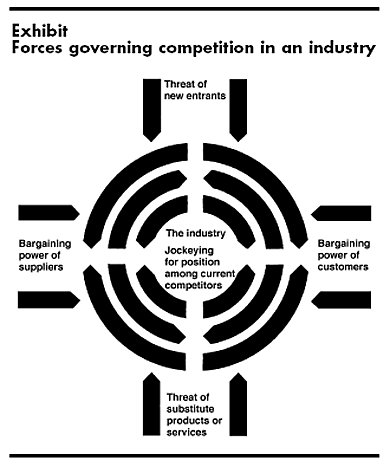We all know the importance of keeping tabs on our competition, especially since the solar industry is highly competitive.
Whether you’re striving to gain or maintain market share, the need to know competitors’ goals, strategies, assumptions of the market, and abilities to achieve their goals is just part of doing business.
How often do you make time for competitive analysis?
As Inc. Magazine points out,
“Keeping tabs on your rivals, formally or informally, usually occurs in one of two ways. Either you are monitoring them regularly… or you are suddenly faced with a surprise. The latter case often reflects a failure to think broadly about who your competitors really are.”
In this article, we’ll cover how to set up a competitive analysis process to routinely keep tabs on your competitors. We also give some tips to (legally) collect competitive intelligence.
Start by making competitive analysis a regular business practice
Setting regular time aside to monitor your competitors’ activities greatly reduces your risk of being caught off guard. Appoint one individual to oversee competitive analysis to establish it as a standard practice in your company. But keep in mind that person is not solely responsible for competitive intelligence.
“Your whole company is [responsible]. Understanding the market landscape and applying those learnings to your role – from sales to customer service to product – is necessary to help the company excel in every area,” suggests Ellie Mirman, content marketing officer at Crayon.
Consider setting up an internal council with key representatives from each department to discuss the following:
1. Who are the decision makers or key personnel who need access to the information? These people are anyone who will make decisions and adjust strategies based on your analysis.
2. Listen to each key person to identify what information about the competition they care about most.
3. Solidify a process to share and analyze information.
The designated point person in your company becomes the keeper of information gathered and organizes it in a way that your internal council can easily review it.
Anyone in the company can contribute to such a repository, and you can rest assured that this important task doesn’t fall by the wayside.
“If you make competitive intelligence everyone’s responsibility, it will be forgotten. Wise companies appoint a centralized curator of competitive intel, who updates the repository and keeps everyone else informed,” notes Michael Fertik, founder of Reputation.com.
At EnergyBin, we appointed one of our marketing specialists to be our curator. We convene our internal council once a month to review information and discuss opportunities and threats. If high priority information comes up, we’ll meet more frequently. With so many changes in the solar industry taking place, it just makes sense to monitor the market on a daily basis.
Many models exist to analyze the data you collect. You can use a basic SWOT analysis, which stands for strengths, weaknesses, opportunities and threats.
Another model is a strategic group map, where you plot your company and your competitors on a grid against two variables that most define success in your field.
If you want to see the relationship between the primary customer benefit of a product or service and prices of all like products / services in a given market, consider using price-benefit positioning maps.
Whichever model you decide to use, strive to be as objective as possible. Stick to the facts your information presents about your competitors. And be honest about where your company stands.
Get familiar with the 5 forces of competition
The school of business recognizes five key forces that serve as the foundation of competitive landscape. When we understand the collective strength of these forces, we can determine an industry’s profit potential.
Such knowledge of the solar industry is particularly helpful for your company, whether you are an equipment broker looking to transition into solar or a mature company with many years of solar under your belt.
The five forces of competition are:
1. Threat of new entrants
2. Bargaining power of customers
3. Threat of substitute products/services
4. Bargaining power of suppliers
5. Jockeying for position among current competitors

“Whatever their collective strength, the corporate strategist’s goal is to find a position in the industry where his or her company can best defend itself against these forces or can influence them in its favor,” advises Michael Porter, the creator of the five forces model and professor at Harvard Business School.
Studying these five forces with respect to the energy industry may open your eyes to competitors you aren’t aware of. Plus, you may see new opportunities that your company can take advantage of.
Threat of Entry
Take for example the threat of entry. If barriers to entry are high, as is the case in mature solar markets, new entrants should expect prompt retaliation from entrenched competitors.
This is particularly evident among solar companies who emphasize their years of experience to woo customers.
If you don’t have the same level of experience, you may find you’re losing customers to competitors.
Look for ways to earn trust from buyers. You can also try undercutting your competitor’s price and offer a product/service guarantee.
Buyer Power
Another strong force we often see in the solar industry is buyer power. Large volume buyers, such as distributors, developers, EPCs, and commercial & industrial contractors tend to get first dibs at equipment supply and bulk discounts.
Small-commercial contractors and installers are subject to higher equipment prices, which drives up the cost of solar for homeowners and small businesses.
To defend your business against high prices, consider some of these strategies. For every PV equipment need, obtain quotes from multiple sellers. This practice can easily be done via online exchanges like EnergyBin.
When speaking with your customers, emphasize the fact that solar will save them thousands of dollars in the future. You can also suggest alternative brands and varying wattages to your customers to show a range in pricing.
Substitute Products
A third force to consider is the threat of substitute products. This threat affects any industry that is driven by technology innovation. We see this to be true in solar with new product releases occurring nearly every few months.
In addition, we know that natural gas as an energy source is dominant to solar in many markets today. Where that is the case, it is challenging to convince consumers to make the switch to renewable energy.
But many opportunities exist in this environment to influence this force in your favor. For example, because of the rapid enhancements in module efficiency, prices of lower wattage panels have fallen. If your customer has the space for them, older model panels may be a solution to cut costs.
Plus, you may be able to then convince the customer to add a storage component to their array. The reliability feature that comes with storage is one feature natural gas can’t offer.
Solar Industry Potential
In many markets, entry into the solar industry is easy, and competitors are working to establish solar energy as a superior substitute to fossil fuel energy sources.
Consumers are beginning to recognize major brand names, but quality products and pricing beat out snazzy marketing more times than not.
Many major players are crafting strategies to gain or maintain economies of scale, whether through vertical integration or volume sales, acquisitions, etc. Several companies are searching for ways to reduce overhead expenditures.
It all boils down to:
What is the potential of your business?
Identify who your competitors are
Perhaps you already know who your competitors are. But we’d still recommend conducting an online search to check for new entrants from time to time.
The solar industry is relatively easy for new companies to come onto the scene. Plus, companies that have been in the industry for years have been known to quickly shift strategies and focus.
There are two main ways to search for competitors online: (1) search for companies in your business category, or (2) search for specific products or keywords.
When searching for companies that fall into the same category as yours, use these platforms:
- Google / Firefox / Edge, or other search engines
- YouTube
You can also limit a search to a geographic region by adding a city, state or country name. Pay attention to top search results, and analyze their meta descriptions and websites.
Another way to find competitors online is by using keywords or a product part number in your search.
For this type of search, you may want to start with Ubersuggest, a free keyword look-up tool. This site provides you with the total monthly search volume for a keyword, a list of similar keywords, their monthly search volumes, and URL addresses that rank for the keyword, such as company websites. Many of these companies could very well be your direct competitors.
The outcome of your search is to select up to five primary competitors that you plan to monitor on a regular basis.
Tips to spy on your competition
There are many ways to quietly yet legally gather data on your competitors. Here are some tips that we’ve found helpful. Remember to document your findings in your repository to keep it all in one place.
1. Scope out their social media.
Don’t just read their posts. Dive deeper into how they are positioning themselves on social media. If they’re on Twitter, set up a list of competitors for easy access to their tweets.
Look at their engagement. How are people interacting with their content, and how are they responding? Research who their employees are, which can be easily done on LinkedIn. Dig into their followers:
“A large follower base shows people are taking notice of them – but even a small number of followers can be revealing once you dig into the composition. Are influential journalists and bloggers part of their following?” – Michael Fertik
You also may want to scope out social media groups for solar professionals, such as Solar Energy Professional Network and Solarpreneur on Facebook as well as Solar Energy Network on LinkedIn. Reading through the newsfeeds could reveal tactics and strategies that your competitors are deploying.
2. Sign up for your competitors’ email lists.
Subscribing to emails is an easy way to get company information like products for sale, upcoming events, promotions, company announcements, etc.
If you’re concerned about using your work email address, sign up with a generic free account. Reserve that account solely for your incognito work.
3. Search for their names in the media.
With online news publications, you can easily search archives for a specific keyword. Visit PV Magazine, Solar Power World, Greentech Media, Renewable Energy World, etc. and type your competitor’s name into the search function.
In addition to trade magazines, check out podcasts featuring interviews with industry professionals. Many interviews go in-depth into trade secrets direct from your competitor's mouth.
If you’re looking for an automated newsfeed, set up Google Alerts with your competitors’ names or any keyword you want the latest news on.
You may also want to check out local news publications.
“You’ll be surprised what competitors might say when they think they’re just talking to a small local audience.” – Carol Tice
4. Read their job ads and employee reviews.
Websites like Indeed and Glassdoor offer a different window into a competitor’s goals and internal operations. You can learn a lot about what strategic direction they are headed by the types of job descriptions they’re hiring for.
Job descriptions may give detailed information about new initiatives or projects as well.
In addition, past and current employee reviews can be a source of how things are going internally. If the company has low employee turnover and positive reviews, then it’s probably a strength.
5. Talk to your competitors and their employees in person.
Not all information gathering should take place online. Attend trade shows and other events where your competitors plan to be. Visit them at their exhibit booths. Listen to their presentations. Ask them how business is going.
Ask their employees how they like their jobs or what projects they are working on. Observe how they are pitching their company and products to prospects. And be careful about what information you give out.
“Remember (and remind your employees) to be careful about what information you divulge about your company to outsiders. Chances are your competitors are just as eager to get inside information about your company as you are in getting information about them.” – Janet Attard
6. Find out what their customers and vendors think of them.
You can start by reading your competitors’ Google or Facebook reviews. You can also ask your industry colleagues what their experience working with them was like. This information gathering tactic can be as simple as picking up the phone.
Ask customers:
“I’m thinking of working with Company XYZ. What do you think about them?”
“Were you satisfied with their service?”
“Would you do business with them again?”
Ask vendors:
“Do you have any advice for how other companies like mine have promoted this product?”
“What products are you selling quickly?”
“What other companies are selling this product?”
And if you’re daring, you can play the role of secret shopper, which would give you clues to how your competitors handle customer inquiries.
Your competitors could be your collaborators
If you’re dealing in PV equipment, you’re probably active in a trading community like EnergyBin that allows you to connect to buyers as well as keep an eye on your competitors.
Equipment trade is an interesting business in the sense that, from time to time, your competitor might actually become your collaborator.
In our experience working with solar equipment brokers, they tend to work together to make trades that benefit one another.
For example, if you see that your competitor is looking to buy a specific part that you have in your inventory, then you would probably want to sell to them.
Or, perhaps your competitor has a product that they are selling. You know you can line up a buyer for that product and earn a resale profit. In this case, you’d probably want to buy from your competitor.
All in all, it’s wise to keep tabs on your competitors, not only for the threats they could pose but also for the opportunities they may reveal. If you’re not already doing so, start monitoring your competition today, and make it a regular business practice.
You May Also Like:
 How to Earn Trust When Buying & Selling Solar Equipment Online
How to Earn Trust When Buying & Selling Solar Equipment Online
 The Ultimate Guide to Buying Wholesale Solar Equipment
The Ultimate Guide to Buying Wholesale Solar Equipment
 The Ultimate Guide to Selling Wholesale Solar Equipment
The Ultimate Guide to Selling Wholesale Solar Equipment
